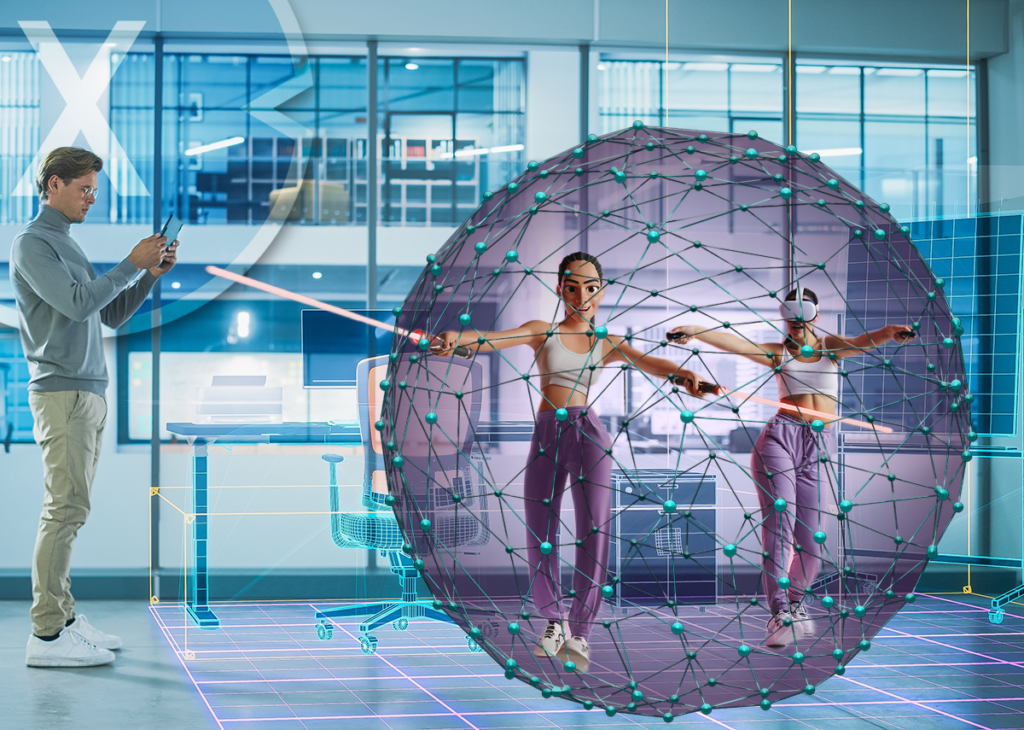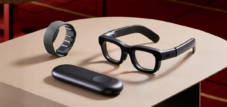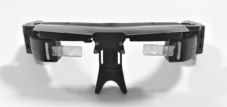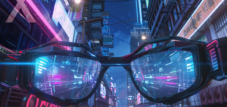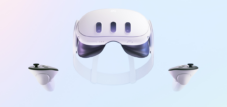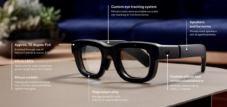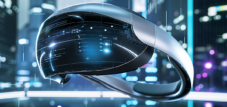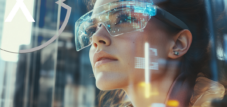Extended Reality: XR-Tech comparison of AR glasses technology - Orion glasses from Meta and the full-color laser module (FCLM) from TDK
Language selection 📢
Published on: November 4th, 2024 / Update from: November 4th, 2024 - Author: Konrad Wolfenstein
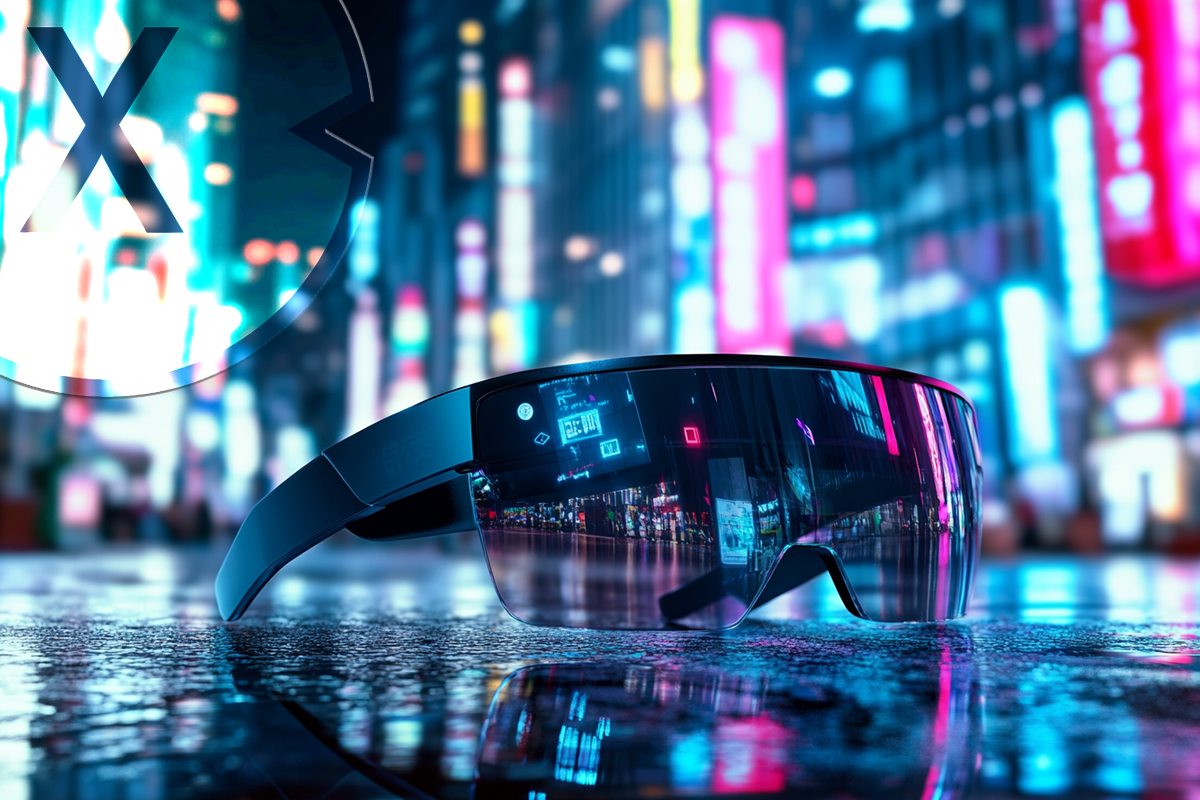
XR-Tech duel of AR glasses technology - Orion glasses from Meta and the full-color laser module (FCLM) from TDK - creative image: Xpert.Digital
🚀💡 Innovations in AR: Meta vs TDK - A technology duel
👓🤖 From micro-LEDs to laser modules: The AR technology competition
The difference between the micro LED projectors and silicon carbide lenses in Meta's AR glasses and TDK's full color laser module (FCLM) lies mainly in the different approaches to image projection, the technologies used and the resulting advantages for the user experience. Both companies are pursuing different technological approaches to overcome the challenges of augmented reality (AR) and provide users with an immersive and comfortable experience.
💡🔬 Metas Micro LED projectors and silicon carbide lenses
Meta relies on micro-LED projectors in combination with innovative silicon carbide lenses to project images directly onto the lenses of the glasses. This technology allows for high refraction of light, which directly affects image quality and the clarity of the field of view. The silicon carbide lenses allow the light to be bundled efficiently and the image display to be precisely controlled. Meta's use of micro-LEDs is characterized by high efficiency and brightness, which is particularly advantageous in bright environments as the images remain clearly visible even in strong ambient light.
Choosing silicon carbide as the material for the lenses brings several advantages. Silicon carbide has a higher refractive index than conventional glass and can therefore focus and refract light more strongly, allowing for more precise imaging. It is also more durable and lighter than glass, which contributes to the weight of the glasses and increases wearing comfort. The combination of these properties makes silicon carbide an ideal material for applications where optical clarity and robustness are critical. Meta's AR glasses, codenamed Orion, achieve a field of view of around 70 degrees with this technology, which is considered very large compared to other AR glasses available on the market. A larger field of view enables more intense immersion and an expanded representation of virtual content in the real environment.
A key advantage of micro-LED projectors is that they enable precise image representation on the lenses without the need for additional optical components such as mirrors or other lens elements.
This contributes to the compactness of the glasses and reduces mechanical complexity. The micro LEDs are able to ensure high image quality in terms of both brightness and color accuracy. The precise color representation and high contrast are particularly important features of this technology, as they create a realistic image and allow users to clearly distinguish between real and virtual content.
☄️🌈 TDK's Full Color Laser Module (FCLM)
In contrast to Meta, TDK takes a radically different approach with the Full Color Laser Module (FCLM). Instead of projecting the image onto a lens, TDK's FCLM projects the laser light directly onto the user's retina. This technology is based on planar waveguide (PLC) circuits that effectively mix the laser light without the need for optical components such as lenses or mirrors. Direct projection onto the retina allows users to perceive both the real world and virtual content simultaneously and clearly without having to change focus. In doing so, TDK addresses one of the biggest challenges of conventional AR glasses: the problem of constantly changing focus between real and virtual levels.
A key advantage of FCLM technology is the ability to display a clear image regardless of the user's vision.
Because the laser light is projected directly onto the retina, the image is equally sharp for all users, regardless of their individual vision. This is a significant advantage over conventional AR solutions, where glasses wearers often struggle to achieve an optimal viewing experience. In addition, the FCLM module offers an exceptional color depth of 16.7 million colors, which guarantees impressive visual quality and enables a vivid display of virtual content. The viewing angle is also extended compared to previous modules, which contributes to a more intensive user experience.
At just 0.38 grams, the FCLM is one of the most compact and lightest modules of its kind, making it ideal for use in elegant, minimalist AR glasses. Due to their small size and light weight, AR glasses equipped with TDK's FCLM can be manufactured in a particularly slim design, which significantly increases their suitability for everyday use.
🌟 Comparison between Metas Micro LED projectors and TDKs full color laser module
🚀💡 In order to shed more light on the comparison between Meta's micro-LED projectors with silicon carbide lenses and TDK's full-color laser module (FCLM), it is important to examine the respective functions, material advantages, technical limitations and specific application possibilities in detail . Both technologies are groundbreaking in the field of augmented reality (AR), but their differences reflect different development priorities and the user needs they address.
🔍 1. Projection technology
Meta relies on micro-LED projectors that project images directly onto the specially developed silicon carbide lenses of the glasses. This approach uses a micro-sized light-emitting diode (LED) that projects high-resolution images into the user's field of vision. Micro LEDs are considered extremely efficient and offer low energy consumption, which is particularly important for wearable devices such as AR glasses. They produce bright, high-contrast images and are optimized to be clearly visible both indoors and in highly lit environments. The use of micro-LEDs also has the advantage that no additional mirrors or lenses are required to project the image onto the glasses. This reduces the number of components and enables a lighter construction.
TDK uses a different technology: the full color laser module (FCLM). Instead of projecting the picture onto a lens, the FCLM sends the image directly to the retina of the user. This direct laser projection generates the image directly in the eye without a lens being in the field of vision. This so-called “Retina projection” only requires minimal adaptation of the glasses and enables consistent image quality regardless of the user's individual viewing strength. In contrast to Metas approach, TDKS module does not need any additional optical elements for image transmission, since the lasers themselves project the image onto the retina.
🔦 2. Lens material
Meta relies on silicon carbide as the lens material, which is characterized by its high light refraction and robustness. Silicon carbide has a higher refractive index than glass, which means the light is focused more strongly. This material property is crucial for image quality because the light is refracted and focused more precisely. Silicon carbide is also a very light and durable material, which makes the glasses robust and comfortable. Another advantage is thermal stability: silicon carbide is temperature-resistant and ensures that the device remains stable even during prolonged use.
TDK does not require lenses in the traditional sense as the projection occurs directly onto the retina. This technology eliminates the need for a physical lens in front of the eye, thereby reducing the optical limitations that could arise from the material nature and shape of the lens. This has the advantage that the glasses structure can be made even more compact and lighter, which increases wearing comfort and enables a more discreet look.
🎯 3. Field of view
The field of view is a central aspect of the user experience of AR glasses, as it determines how much virtual information the user can perceive in their environment.
Meta offers a field of view of approximately 70 degrees with its silicon carbide lenses and micro LED projectors. This is an impressive value in the AR world and allows for a wide presentation of information. A larger field of view ensures greater immersion as the user can see more content at once. However, a wide field of view combined with high resolutions can also lead to increased energy consumption, which in turn affects battery life. Meta has therefore created a compromise between field of vision and energy efficiency that should be sufficient for many applications without having to charge the glasses too frequently.
TDK states that their FCLM offers “greater visibility” compared to previous models. Since the projection occurs directly onto the retina, the field of vision is theoretically more flexible and can be expanded depending on the glasses model. A directional retina projection allows the field of view in the user's eye to be controlled more dynamically. This means that TDK could potentially further increase the field of view in future models without compromising on image quality.
🎨 4. Image quality and color representation
Image quality and color representation are also crucial factors for a realistic and immersive AR experience.
Meta achieves high image quality through the use of micro LEDs, which can produce a very clear and detailed image. LEDs naturally offer high brightness and color fidelity, which enables precise color representation in various lighting situations. The high light refraction of the silicon carbide lenses means that the image is perceived particularly sharply and clearly. An advantage of LED technology is that it enables high color depth, resulting in more vibrant and natural colors that make the AR experience more realistic.
TDK uses laser light to display colors, achieving an exceptional color depth of 16.7 million colors. Lasers have higher coherence than LEDs, meaning the light is emitted in narrower wavelength bands and can therefore produce very precise colors. This enables extremely detailed representation and vibrant colors. Since the laser projection is aimed directly at the retina, the image quality remains constant even for users with visual impairments. The FCLM can therefore deliver sharp, high-contrast images regardless of individual vision.
📏 5. Size and weight
Meta has created a light and robust design by using micro LEDs and silicon carbide lenses, but still needs an external calculation module. To enable the slim design, part of the computing power is outsourced to an external device, the so -called “Compute Puck”. This puck is compact enough to fit into the pocket, but the need for an additional device could be a restriction for some users, since this could affect mobility, especially if a wireless connection has to be maintained over a short distance.
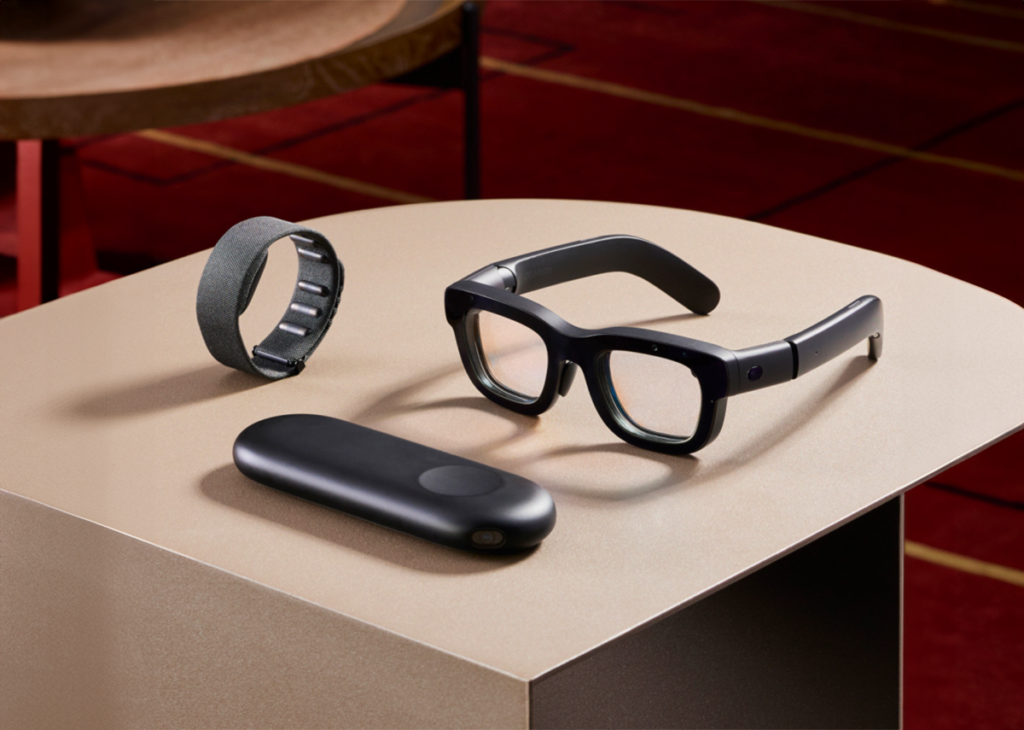
The glasses must be paired with a “neural bracelet” (left) and a wireless compute puck (middle) – Image: Meta
TDK, on the other hand, has developed the FCLM, an extremely compact module weighing just 0.38 grams, which enables integration into particularly slim and light glasses. Since the FCLM module does not require an additional optical processing unit, the entire AR glasses can be made very compact, which increases their suitability for everyday use. Especially for users who want to wear AR glasses for longer periods of time or for outdoor activities, TDK offers a lighter and less bulky alternative.
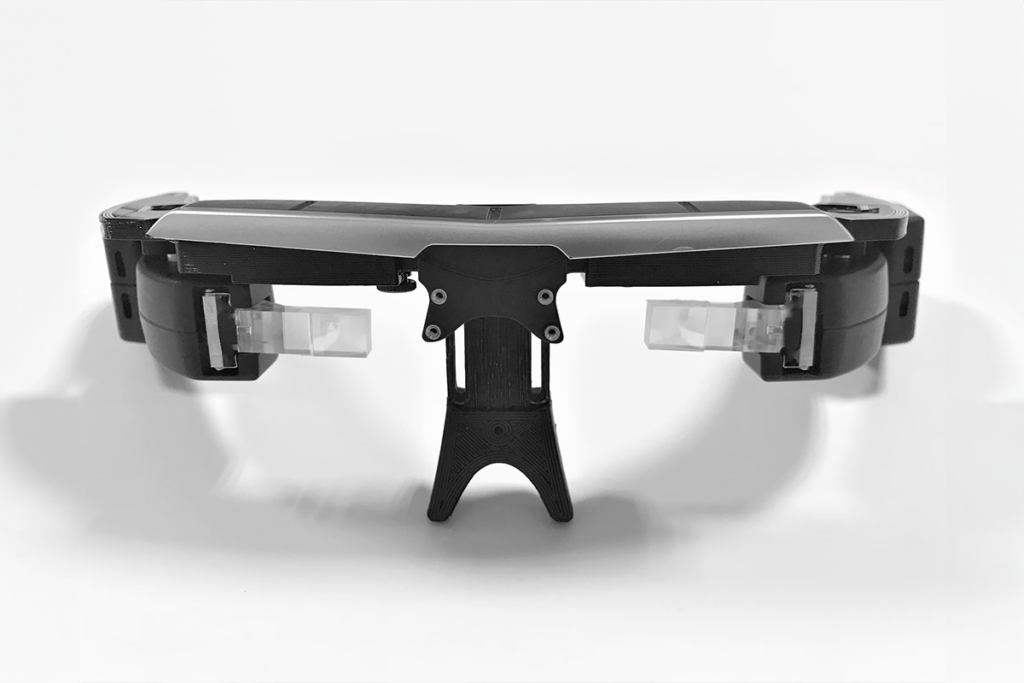
Advances in XR technology for the Metaverse, AR and VR glasses: full-color laser for 4K smartglasses from TDK - Image: TDK
🎯 6. Area of application and target group
Meta's technology with micro-LED projectors and silicon carbide lenses is aimed at users who value visual precision and a wide field of vision. This makes Metas glasses ideal for applications that require detailed representation of information in a larger field of view, such as in industrial production, design or technical training. The glasses could serve as a tool for visualizing complex data and supporting precise work.
TDK's FCLM, on the other hand, appeals to users who rely on consistently sharp images without changing focus and who prefer a particularly compact and lightweight design. The FCLM could be particularly suitable for the consumer sector, for example in everyday use for navigation, messaging and the representation of digital information in the real world. For users who want to wear their glasses frequently and in different contexts, TDK offers a flexible and everyday solution.
💡 Exciting technologies, exciting solutions
Both technologies impressively show how differently the requirements for AR glasses can be solved and offer interesting perspectives for the future of augmented reality. While Meta's approach relies on a high level of visual realism and a large field of view, TDK's solution offers a lighter and more flexible alternative with an image quality that remains constant regardless of the user's visual acuity.
The choice between the two technologies will largely depend on the individual needs and the specific area of application of the user. However, in the future, hybrid approaches could be developed that combine the advantages of both technologies - i.e. a system that combines a wide field of view with a compact design and retina projection.
🗒️ Xpert.Digital: A pioneer in the field of extended and augmented reality
🚀🕶️ Our rating in comparison: New technology in the field of augmented reality
💡 Meta's ORION AR glasses: progress and challenges
Meta has established itself as a pioneer in the world of AR with the development of the ORION AR glasses. The ORION glasses are designed to take the AR experience to a new level by giving users the opportunity to experience and interact with virtual content directly in their environment. An important component of this technology is the so-called Compute Puck - an external device that is required to process and control the AR content. This Compute Puck is a portable computer that offers high computing power and is specifically optimized for processing large amounts of data necessary for displaying realistic AR content. However, the need for an additional device also represents a certain limitation, as users must always carry the Compute Puck with them, which can affect carrying comfort and mobility. Even if the computing power of the Compute Puck is impressive and may be sufficient for complex AR applications, the need for an external device remains a disadvantage that reduces the attractiveness of the ORION AR glasses in certain areas of application.
🔍 TDK's full-color laser module: A compact solution
In contrast, TDK offers a significantly more compact and efficient solution for smart glasses and AR glasses with its full-color laser module (FCLM). TDK has developed an innovative module that enables the display of color-intensive and high-resolution content without the need for external devices. TDK's Full Color Laser Module (FCLM) is based on laser technology that enables it to display true-to-life colors and provide an exceptional visual experience. This technology not only creates impressive image quality, but also makes the module particularly space-saving and light. This makes the FCLM ideal for mobile and portable applications where weight and size play an important role.
🌟 Versatility and energy efficiency of the FCLM
TDK's FCLM is not only limited to displaying realistic images, but also opens up new possibilities for integrating AR content into everyday applications. The compact design of the module makes it possible to develop smart glasses that can hardly be distinguished from normal glasses and are therefore highly accepted by users. These smart glasses could, for example, be used in retail, industrial or educational sectors, where they could display additional information directly in the field of vision of employees and customers. By seamlessly integrating AR content, FCLM can become an important part of digital transformation in numerous industries.
🔋 Energy efficiency and image quality of TDK's FCLM
Another advantage of TDK's FCLM is its energy efficiency. While traditional AR glasses often struggle with the problem of limited battery life because they require a lot of resources for image processing and displaying AR content, the FCLM is designed to work with minimal energy consumption. This extends the service life and reduces the dependency on a constant power supply, which is a crucial factor especially in mobile applications. The energy efficiency of the FCLM is not only environmentally friendly, but also cost-effective, as it requires less frequent charging and extends the life of the batteries.
🎨 Convincing image quality of the FCLM
The FCLM from TDK is also convincing in terms of image quality. Laser technology enables display that is free from the limitations of traditional screens. Colors appear more vibrant and realistic thanks to laser technology, and contrast and brightness are also significantly higher than with other technologies. This makes FCLM particularly interesting for applications where precise color representation is important, such as in medicine, design or cartography. Users experience AR content that blends harmoniously into the real environment, creating a particularly immersive experience. This realistic representation effect could play an important role in the development of AR technologies in the future, as users place ever higher demands on the quality and authenticity of the content.
🔄 Versatility and integration with XR technologies
Another aspect that makes the FCLM a favorite for the development of XR technologies and AR glasses is its versatility. The module can be flexibly integrated into various devices and could therefore be used in a variety of applications. Whether in industry for maintenance work, in logistics to display stock levels or in healthcare to support doctors and nurses – the possibilities are almost endless. The flexibility and easy integration make FCLM a future-proof solution that can support companies from a wide range of industries in implementing their digital strategies.
🏆 Summary: TDK's FCLM vs. Meta's ORION AR glasses
In summary, it can be said that the full-color laser module from TDK offers clear advantages over the ORION AR glasses from Meta. The independence from an external device, the compact and lightweight design, the excellent image quality and the high energy efficiency make the FCLM the ideal choice for mobile and user-friendly AR applications. While Meta's ORION AR glasses are certainly an impressive product with high computing power, the dependence on the Compute Puck remains a disadvantage that limits users' flexibility and comfort. The FCLM from TDK, on the other hand, enables seamless integration into everyday life and offers image quality that leaves little to be desired.
Choosing the right AR device or module ultimately depends on the specific requirements and application area. However, for companies looking for an uncomplicated and user-friendly solution, TDK's FCLM should be an extremely interesting option. As developments in AR and XR technology advance rapidly, FCLM could pave the way for a new generation of smart glasses that have the potential to permanently change everyday life and the world of work.
We are there for you - advice - planning - implementation - project management
Industry Hub Blog
An industry hub blog is a digital platform where content related to specific industries, sectors or business areas is published. The term "hub" refers to a central location or hub where relevant information, news, insights and resources are made available to professionals, entrepreneurs, investors and those interested in a particular industry. An Industry Hub Blog serves as an information source and discussion forum designed to connect the community, share knowledge and follow the latest developments in the respective industry.
I would be happy to serve as your personal advisor.
You can contact me by filling out the contact form below or simply call me on +49 89 89 674 804 (Munich) .
I'm looking forward to our joint project.
Features of an Industry Hub Blog
Industry-specific content
An industry hub blog focuses on a specific industry or sector of the economy. The published content covers topics that are relevant to professionals and interested parties in this industry.
Latest news
The blog provides current news and updates on developments, trends, market events and events in the respective industry.
Expertise and insights
Industry Hub Blogs provide expertise, insights and analysis from experts and industry insiders. This information can help develop a deeper understanding of the challenges and opportunities in the industry.
Best practices and tips
The blog can provide best practices, advice and tips for companies and professionals in the industry. This can range from business strategies to technology trends.
Networking and community building
Readers often have the opportunity to leave comments and participate in discussions. This creates an online community of like-minded people who can share ideas and connect with each other.
Resources and tools
Industry Hub Blogs can provide links to useful resources, tools, guides and reports relevant to the industry.
Events and conferences
The blog can also provide information about upcoming industry events, conferences, trade shows and webinars.
Xpert.Digital - Konrad Wolfenstein
Xpert.Digital is a hub for industry with a focus on digitalization, mechanical engineering, logistics/intralogistics and photovoltaics.
With our 360° business development solution, we support well-known companies from new business to after sales.
Market intelligence, smarketing, marketing automation, content development, PR, mail campaigns, personalized social media and lead nurturing are part of our digital tools.
You can find out more at: www.xpert.digital - www.xpert.solar - www.xpert.plus



